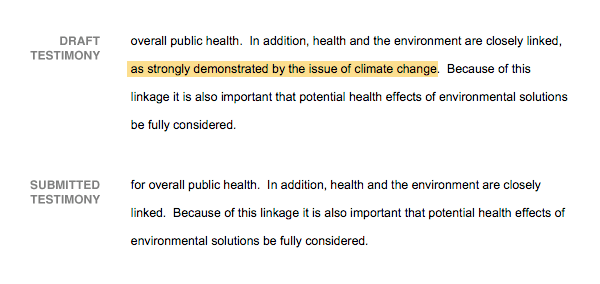First, a look at what the blogosphere is thinking about recession.
Why is oil above $90?
The answer is pretty simple, really– demand keeps going up but supply doesn’t.
Still fighting the rear guard action against reality
From the New York Times (reg.req.):
White House Cuts to Climate Testimony Raise Questions
An example of one of the changes made to Julie L. Gerberding’s testimony. Source: NYT.
San Diego fires
Thanks to our many friends around the world who’ve asked if we’re ok. We are indeed, and, if you’re curious, here’s our story.
Distressing Picture of the Day
From the IMF’s September Global Financial Stability Report:
Rules versus discretion in monetary policy
I had the privilege of attending a conference in St. Louis this week on Monetary Policy under Uncertainty at which I presented a paper on the response of interest rates to changes in the fed funds target. One of the interesting themes that came up in some of the other papers concerned whether the public’s interests are best served when monetary policy follows mechanical rules as opposed to responding to events in a discretionary way. Here I report on some of the discussion of this issue from the conference.
The Debt-to-GDP Outlook in Plausible Scenarios
In updating a graph of the projected debt-to-GDP ratio, I was only slightly surprised to see that the out-years (still) look pretty grim.
Deteriorating lending standards
What is the significance of the fact that the most recently issued subprime mortgages are the ones that are running into the biggest problems?
So Much for that Balanced Budget…
From Bloomberg, an anodyne to happy talk:
Superconduit
The Wall Street Journal describes it as a “superconduit”,
the New York Times refers to it as a “super-SIV”,
and the Washington Post is calling it a
“Master-Liquidity Enhancement Conduit”. Whatever you call it, does it make any sense?
